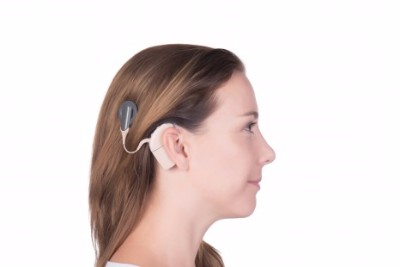Blog
-

Research on Pitch Perception May Move Forward New Cochlear Implant Developments.
 29 Nov , 2017
29 Nov , 2017
Research on Pitch Perception May Move Forward New Cochlear Implant Developments.
Picture yourself with a friend in a crowded restaurant. The din of other diners, the clattering of dishes, the muffled notes of background music, the voice of your friend, not to mention your own; all compete for your brain’s attention, according to an article in UW News, the University of Washington’s news source.
For many people, the brain can automatically distinguish the noises, identifying the sources and recognizing what they “say” and mean, thanks to—among other features of sound—pitch.
But for someone who wears a cochlear implant, a surgically implanted electronic device that restores a sense of hearing, pitch is only weakly conveyed. For decades, scientists have debated how exactly humans perceive pitch, and how the ear and the brain transmit pitch information in a sound. There are two prevalent theories: place and time. The “time code” theory argues that pitch is a matter of auditory nerve fiber firing rate, while the “place code” theory focuses on where in the inner ear a sound activates.
Now a new study bolsters support for the place code. These findings, published in the journal of Neuroscience, could inform further development of the cochlear implant. The paper’s lead author is Bonnie Lau, a speech-language pathologist and postdoctoral fellow at the University of Washington Institute for Learning & Brain Sciences. Here, her research focuses on development of the human auditory system.
Pitch is one of the basic aspects of sound. It roughly corresponds to the periodicity of sound waves; sounds with a higher pitch have a higher repetition rate. Most often associated with music and voices, pitch contributes an aesthetic quality to what we hear. Think of an ocean or a symphony; without pitch, Lau explained, “the things we love to listen to, those aesthetic aspects will be changed.” Pitch also functions as a cue to distinguish sounds, especially in noisy places.
“It makes listening in real-world environments like restaurants and public transportation, more difficult when we don’t have access to pitch,” Lau added.
Pinning pitch perception on a “place code” provides opportunities for improvement of cochlear implants that would not be possible if pitch were perceived only through a “time code.”
Here’s how the two codes work:
In a time code, which relies on a phenomenon called “phase locking,” auditory nerve fibers respond to a time-based pattern in a sound wave by firing at the same place every cycle, transmitting information to the brain—a process that works only up to a certain frequency. But beyond a certain repetition rate, the auditory nerve fibers can’t follow the periodicity in a sound.
In a place code, different frequencies activate different parts of the inner ear, with pitch organized from high to low, like a musical scale. Where the activation is indicates the pitch of a sound.
For Lau’s experiment, researchers tested 19 people (average age: 22) with a range of musical training (from no formal training to 15 years’ worth). Musical experience, Lau said, turned out to have no clear correlation with pitch perception in this study.
The participants listened to and compared a series of high-frequency tones (greater than 8,000 Hz) with specialized headphones in a soundproof booth; after each tone, participants used a computer to indicate which sound was higher in pitch. Researchers chose only very high-frequency tones, embedded in background noise, in order to eliminate the possibility of a time code and focused instead on whether a place code was at work. And when these ultra-high frequency pure tones were combined in a harmonic complex (think musical notes), participants’ pitch perception improved significantly.
“Our findings show that even when timing information is not available, you can still hear pitch,” Lau said.
The design of new technologies, then, could benefit from this finding, she said. Cochlear implants currently convey little pitch information to the user, but these results suggest that enhancing place information alone has the potential to improve pitch perception from a cochlear implant. A separate study, supported by the National Institute on Deafness and Other Communication Disorders (NIDCD), is exploring whether a shortened electrode array in the implant can target exclusively high-frequency sounds.
Co-authors on the paper were Anahita Mehta and Andrew Oxenham of the University of Minnesota. The study was funded by a grant from the National Institutes of Health (NIH).
Source: UW News, Journal of Neuroscience
Image credit: Cochlear™





























































































































































































































































































































































































































































































































































































